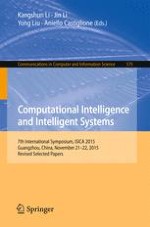2016 | OriginalPaper | Chapter
Negative Correlation Learning with Difference Learning
Author : Yong Liu
Published in: Computational Intelligence and Intelligent Systems
Publisher: Springer Singapore
Activate our intelligent search to find suitable subject content or patents.
Select sections of text to find matching patents with Artificial Intelligence. powered by
Select sections of text to find additional relevant content using AI-assisted search. powered by
